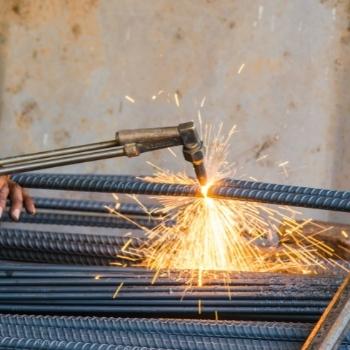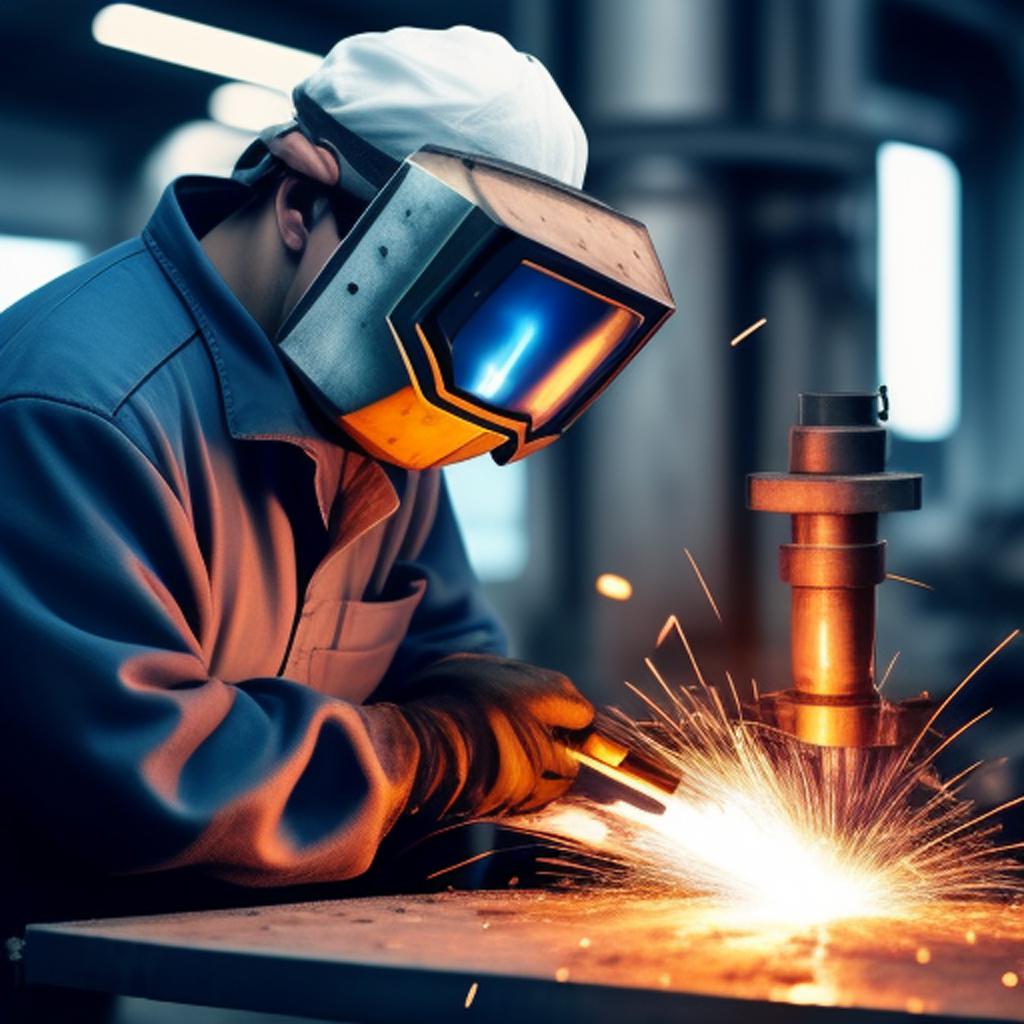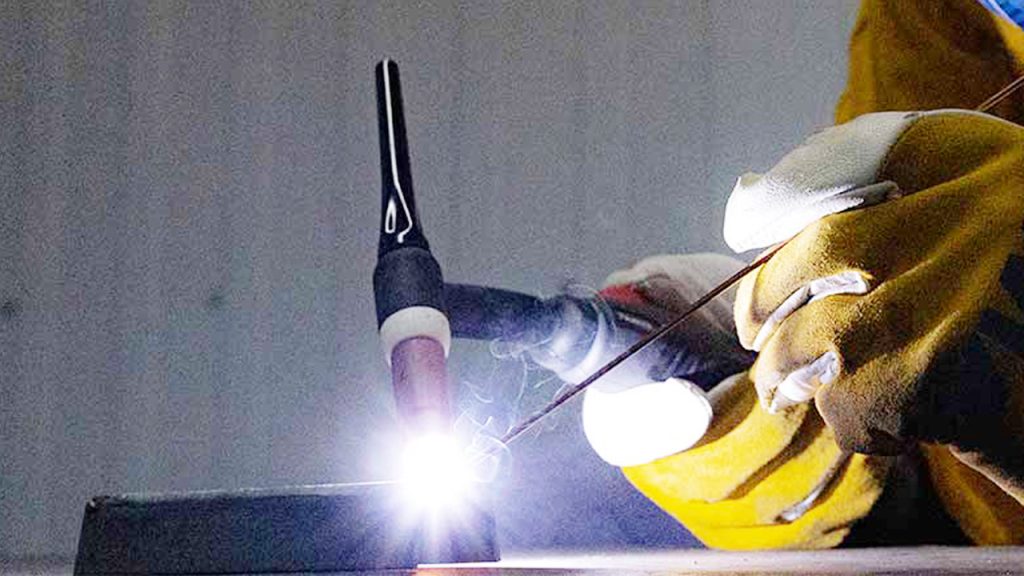Cutting metal for welding requires precision and the right tools. The process can seem daunting but becomes manageable with proper guidance.
Welding projects often begin with cutting metal to the correct size. This step is crucial for ensuring clean, strong welds. Whether you are a beginner or an experienced welder, choosing the right cutting method is essential. Options include using hand tools, power tools, or advanced machinery.
Each method has its advantages and limitations, depending on the type of metal and the project’s complexity. In this guide, we will explore various cutting techniques, helping you find the best way to cut metal for your welding needs. Understanding these methods will improve your efficiency and the quality of your welds. Let’s dive in and make your welding projects smoother and more successful!
Introduction To Metal Cutting
Metal cutting is a crucial step in welding. It sets the foundation for a strong, precise weld. By understanding the basics of metal cutting, you can ensure better results. This guide will help you learn the best techniques for cutting metal for welding.
Importance In Welding
Proper metal cutting is essential in welding. It ensures clean and accurate cuts. This helps in creating strong welds. Clean cuts reduce the risk of defects. They also make the welding process smoother. Poor cuts can lead to weak joints. They can cause structural failures. Accurate cutting is the first step towards a successful weld.
Choosing The Right Technique
Different metals require different cutting techniques. The choice of technique depends on the type of metal and the desired result. Common methods include sawing, shearing, and torch cutting. Each method has its own advantages. Sawing is precise and ideal for small projects. Shearing is fast and suitable for thin metals. Torch cutting works well for thick metals. Understanding these methods can help you choose the right one for your project.
Oxy-acetylene Cutting
Oxy-acetylene cutting is a popular method for cutting metal in welding. It involves using a torch that combines oxygen and acetylene gases. This mixture creates a high-temperature flame capable of cutting through metal. The process is efficient and widely used in many industries. Let’s dive into how it works, its advantages, and its limitations.
How It Works
The oxy-acetylene cutting process starts by lighting the torch. The torch combines oxygen and acetylene gases. This mixture creates a flame that reaches up to 6,000 degrees Fahrenheit. The flame heats the metal to its ignition temperature. Once the metal is hot enough, a jet of pure oxygen is released. This oxygen stream reacts with the hot metal, creating iron oxide. The iron oxide melts and is blown away, creating a clean cut.
Advantages
Oxy-acetylene cutting offers several benefits. It is cost-effective and easy to use. The equipment is portable and does not require electricity. This makes it suitable for fieldwork. The process is also versatile. It can cut through thick metals and is effective on various metal types. Moreover, it allows for precise cuts, even on complex shapes.
Limitations
While effective, oxy-acetylene cutting has its drawbacks. The process generates a lot of heat, which can cause metal distortion. This may affect the quality of the weld. The equipment also requires careful handling. Improper use can lead to accidents. Additionally, the process produces fumes, requiring proper ventilation. It is less effective on non-ferrous metals like aluminum and copper.
Plasma Cutting
Plasma cutting is a popular method for cutting metal in preparation for welding. It involves using a high-speed jet of ionized gas to slice through electrically conductive materials. This technique is favored by many welders due to its precision and efficiency.
Process Overview
Plasma cutting is relatively straightforward. It works by sending an electric arc through a gas that is passing through a constricted opening. This process creates a plasma, which can reach temperatures of up to 30,000°F (16,649°C). The plasma jet melts the metal, and the high-velocity gas blows the molten metal away, leaving a clean cut.
Here’s a simple breakdown of the steps:
- Set up the plasma cutter and connect it to the power supply.
- Choose the appropriate nozzle based on the thickness of the metal.
- Adjust the settings to match the metal type and thickness.
- Start the plasma cutter and guide the torch along the cutting line.
Benefits
Plasma cutting offers several advantages over other metal cutting methods:
- Precision: The fine plasma jet allows for very accurate cuts, even on intricate shapes.
- Speed: Plasma cutters can cut through metal quickly, saving valuable time.
- Versatility: They can be used on a variety of metals, including steel, aluminum, copper, and more.
- Clean Cuts: Plasma cutting produces smooth edges, reducing the need for additional finishing work.
I remember the first time I used a plasma cutter. It was like slicing through butter – smooth and effortless. It’s no wonder so many professionals prefer this method!
Drawbacks
Despite its many benefits, plasma cutting does have some downsides:
- Cost: Plasma cutters can be expensive, both to purchase and maintain.
- Safety: The high temperatures and ionized gases pose potential hazards. Proper safety gear is essential.
- Power Requirements: These machines need a significant power supply, which may not be available in all workshops.
Think of it this way: while plasma cutting is a powerful tool, it’s not always the most practical choice for everyone. Weigh the pros and cons before making your decision.
Laser Cutting
When it comes to cutting metal for welding, laser cutting is a standout method due to its precision and efficiency. It uses a high-powered laser beam to slice through various metals, producing clean and accurate cuts. This technology is a favorite among professionals and hobbyists alike, thanks to its versatility and the high-quality results it delivers. Let’s delve deeper into what makes laser cutting a preferred choice for many.
Technology Behind It
Laser cutting involves the use of a focused laser beam directed at the metal surface. The laser beam is generated by an electrical discharge or a lamp, which excites the laser medium (usually CO2, Nd:YAG, or fiber). This laser beam is then amplified and directed through a series of mirrors and lenses, concentrating it onto a small, precise spot on the metal.
Once the laser beam hits the metal, it heats it to the point of melting, burning, or vaporizing the material. A jet of gas, often nitrogen or oxygen, is used to blow away the molten material, leaving a clean cut edge. This process can be controlled using CNC (Computer Numerical Control) systems, allowing for highly accurate and repeatable cuts.
Pros
- Precision: Laser cutting offers unparalleled accuracy, making it ideal for intricate designs and detailed work.
- Speed: It is significantly faster than traditional cutting methods, which boosts productivity.
- Versatility: Can cut through a variety of metals including steel, aluminum, and titanium.
- Clean Cuts: Produces smooth edges, reducing the need for further finishing processes.
- Automation: CNC systems allow for automated cutting, reducing manual labor and errors.
Cons
- Cost: The initial investment for laser cutting equipment is high, which can be a barrier for small workshops.
- Maintenance: Regular maintenance and calibration are required to keep the system running efficiently.
- Material Thickness: There are limitations on the thickness of materials that can be cut effectively.
- Safety: Operating a laser cutter requires strict safety measures to prevent accidents and injuries.
In conclusion, laser cutting is a powerful method for cutting metal, especially when precision and speed are crucial. While it does come with some drawbacks, the benefits often outweigh the cons, making it a valuable tool in the metalworking industry. If you are considering investing in laser cutting technology, weigh the pros and cons carefully to determine if it’s the right fit for your needs.
Water Jet Cutting
Water jet cutting is a powerful tool for cutting metal. It uses high-pressure water mixed with abrasive materials. This method is precise and versatile. It is suitable for various metals and thicknesses.
Mechanism
Water jet cutting uses a high-pressure pump. The pump forces water through a small nozzle. Abrasive particles like garnet are mixed with the water. The high-speed water stream cuts through metal. This method is effective and efficient.
Strengths
Water jet cutting has many strengths. It produces smooth, precise cuts. It does not generate heat. This avoids warping or altering the metal. It can cut through thick and hard metals. It is also environmentally friendly. The process uses water and natural abrasives.
Weaknesses
Water jet cutting has some weaknesses. The equipment is expensive. It requires regular maintenance. The process is slower compared to other cutting methods. It consumes a lot of water. It also needs a skilled operator.

Credit: www.empireabrasives.com
Mechanical Cutting
When it comes to preparing metal for welding, cutting is a crucial step. One of the most reliable methods is mechanical cutting. This technique involves using physical tools to slice through metal, offering precision and control. Let’s dive into the specifics of mechanical cutting.
Types Of Tools
Mechanical cutting offers a variety of tools, each with its own strengths. Here are some common ones:
- Hacksaw: A manual tool that’s easy to use for small projects.
- Band Saw: Provides consistent and clean cuts, ideal for larger pieces.
- Angle Grinder: A versatile tool for cutting, grinding, and polishing metal.
- Shears: Perfect for cutting thin metal sheets with precision.
Advantages
Mechanical cutting has several benefits:
- Precision: Tools like the band saw offer high accuracy.
- Control: You have full control over the cutting process.
- Versatility: Different tools for different types of metal and cuts.
- Safety: Generally safer with proper use and safety gear.
Disadvantages
While mechanical cutting is effective, it has its downsides:
- Time-consuming: Manual tools can be slower compared to other methods.
- Physical Effort: Requires more physical labor, especially with hand tools.
- Maintenance: Tools need regular sharpening and maintenance.
- Noise: Some tools, like the angle grinder, can be quite loud.
In conclusion, mechanical cutting is a dependable method for preparing metal for welding. With the right tools and some practice, you can achieve excellent results. Remember, each tool has its own set of advantages and disadvantages. Choose the one that best fits your project needs and skill level.
Comparing Techniques
Choosing the best way to cut metal for welding is crucial. Different techniques offer various advantages depending on the project’s needs. Below, we compare some popular metal cutting methods.
Precision
Precision matters a lot in metal cutting for welding. Laser cutting stands out for its high accuracy. It uses a focused beam to make clean, precise cuts. Plasma cutting also offers good precision, though it’s less accurate than laser cutting. For manual methods, a bandsaw can achieve decent precision but depends on the operator’s skill. Oxy-fuel cutting may be less precise, leading to more material loss.
Cost-effectiveness
Cost is a significant factor in selecting a cutting method. Oxy-fuel cutting is often the cheapest option. It uses simple equipment and is suitable for thick metals. Plasma cutting is more expensive but faster and more versatile. Laser cutting is the most costly due to its advanced technology. Manual methods like using a hacksaw or bandsaw are cheaper but labor-intensive. Consider both equipment cost and operational expenses.
Speed
Speed is essential for high-volume projects. Plasma cutting is usually faster than oxy-fuel cutting. It can quickly slice through various metals. Laser cutting is the fastest among automated methods, making it ideal for large-scale production. Manual methods are the slowest, requiring more time and effort. The speed of cutting impacts the project’s overall timeline.

Credit: www.rigpl.com

Credit: www.youtube.com
Frequently Asked Questions
How To Cut Metal In Welding?
Use an angle grinder for small cuts. For precise cuts, use a plasma cutter. Oxy-acetylene torch works for thicker metals. Always wear safety gear.
What Is The Best Tool To Cut A Weld?
The best tool to cut a weld is an angle grinder. It offers precision and versatility. Use a cutting wheel attachment for clean cuts.
What Is The Best Thing To Cut Metal With?
The best tools to cut metal are angle grinders, plasma cutters, and metal cutting saws. Each offers precision and efficiency.
What Is The Best Tool To Cut Metal Straight?
The best tool to cut metal straight is a bandsaw. It provides precise cuts and handles various metal types.
Conclusion
Choosing the right method to cut metal makes welding easier and safer. Each technique has its own benefits. Consider the type of metal and your tools. Practice improves your skill and results. Always prioritize safety with protective gear. The right approach saves time and effort.
Experiment with different methods. Find what works best for your needs. Happy welding!

